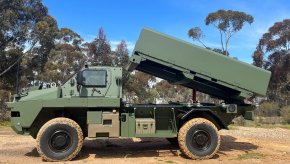You are being extremely blinkered in your thoughts and comments.
Prior to Timor it looked like the the DDG capability was not going to be replaced, as it turned out it half the FFGs weren't replaced either. i.e. three ships in place of nine. Corvettes intended to replace patrol boats were cancelled, then belatedly replaced with highly flawed new patrol boats.
This occured over three governments, CLP, ALP, CLP, any one of them could have, but failed to order more, or better ships. This occured during the largest, longest, economic boom this nation has ever experienced.
MBTs came very close to being scrapped, first under ALP ( who were looking at wheeled armoured gun systems), then the CLP. Bushmaster came very close to being cancelled under the CLP, Mulgara (think Hawkei but 25 years earlier) was cancelled.
Part of the reason the M-113 was life extended instead of replaced was to free up money to motorise most of the army with ASLAV, an AGS, possibly a LAV with a turreted mortar, Bushmaster and Mulgara. The army would have retained a mechanised BDE, with three mech btns, 3RAR was meant to be that third btn. There would also have been a SF BDE.
None of this happened because the government changed, some projects and programs were cut, new ones were introduced, money was saved, money was wasted.
Get off your doom and gloom political high horse. The DSR is not the end of the world, it is high level strategic guidence to the detail that will follow.

